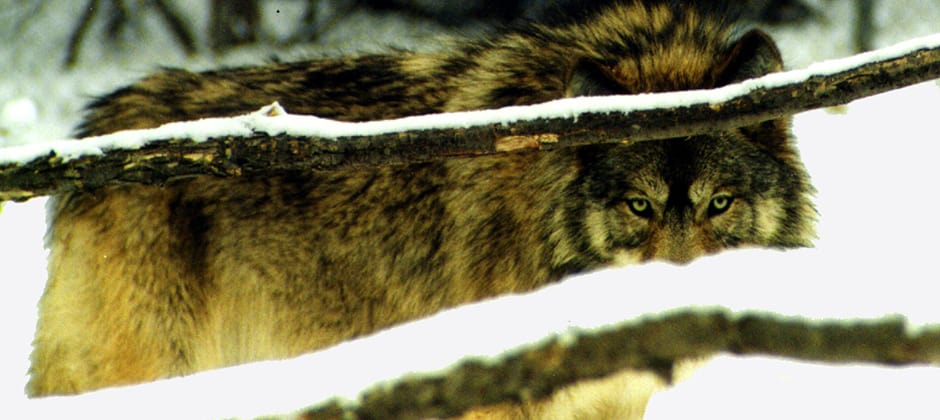Share this article
Does trapping impact wolf behavior?
Wolves have been live-captured with foothold traps for several decades for research and population monitoring purposes. However, trapping in most areas is limited to the spring, summer and autumn because cold winter temperatures can lead to injuries in trapped animals. In addition to physical injuries, animals may show behavioral changes to capture, such as reduced activity levels, changes in home-range size, and avoidance of the habitat in which they were trapped or even permanent dispersal or displacement from the capture site.
Two common live capture methods include foothold traps and cable restraint devices (modified neck snares). National Wildlife Research Center researchers, Wildlife Services-Minnesota Operations staff and their partners evaluated injuries, movement patterns, and space use of 23 and 24 gray wolves (Canis lupus) in north-central Minnesota captured using foothold traps and cable restraint devices, respectively. Injury levels did not differ between capture techniques, but movement patterns and space use were different.
Researchers found that the wolves restricted their activity and movement patterns during the first eight to 10 days following capture by either trap type, but wolves captured in foothold traps traveled farther away from the capture site. Daily movement rates reached an asymptote approximately 14 days earlier for wolves captured with cable restraints as compared with wolves caught with foothold traps. Additionally, space use among wolves caught with cable restraint devices plateaued in a shorter time frame than wolves caught with foothold traps whether using days since capture (38 days earlier) or number of locations (149 locations earlier).
Researchers concluded that wolves captured in cable restraints recovered more quickly from the capture and resumed space use and activity patterns more rapidly than wolves captured with foothold traps.
For more information, please contact Eric Gese at the NWRC Utah research field station, where the focus is studying the ecology and behavior of predators in an effort to identify new management techniques and strategies, especially nonlethal tools.
WS and NWRC also partner with the Association of Fish and Wildlife Agencies in supporting best management practices in wolf trapping. For more information visit the BMP site here.
Header Image:
Researchers concluded that wolves captured in cable restraints recovered more quickly from the capture and resumed space use and activity patterns more rapidly than wolves captured with foothold traps.
©Scott Flaherty/U.S. Fish and Wildlife Service








